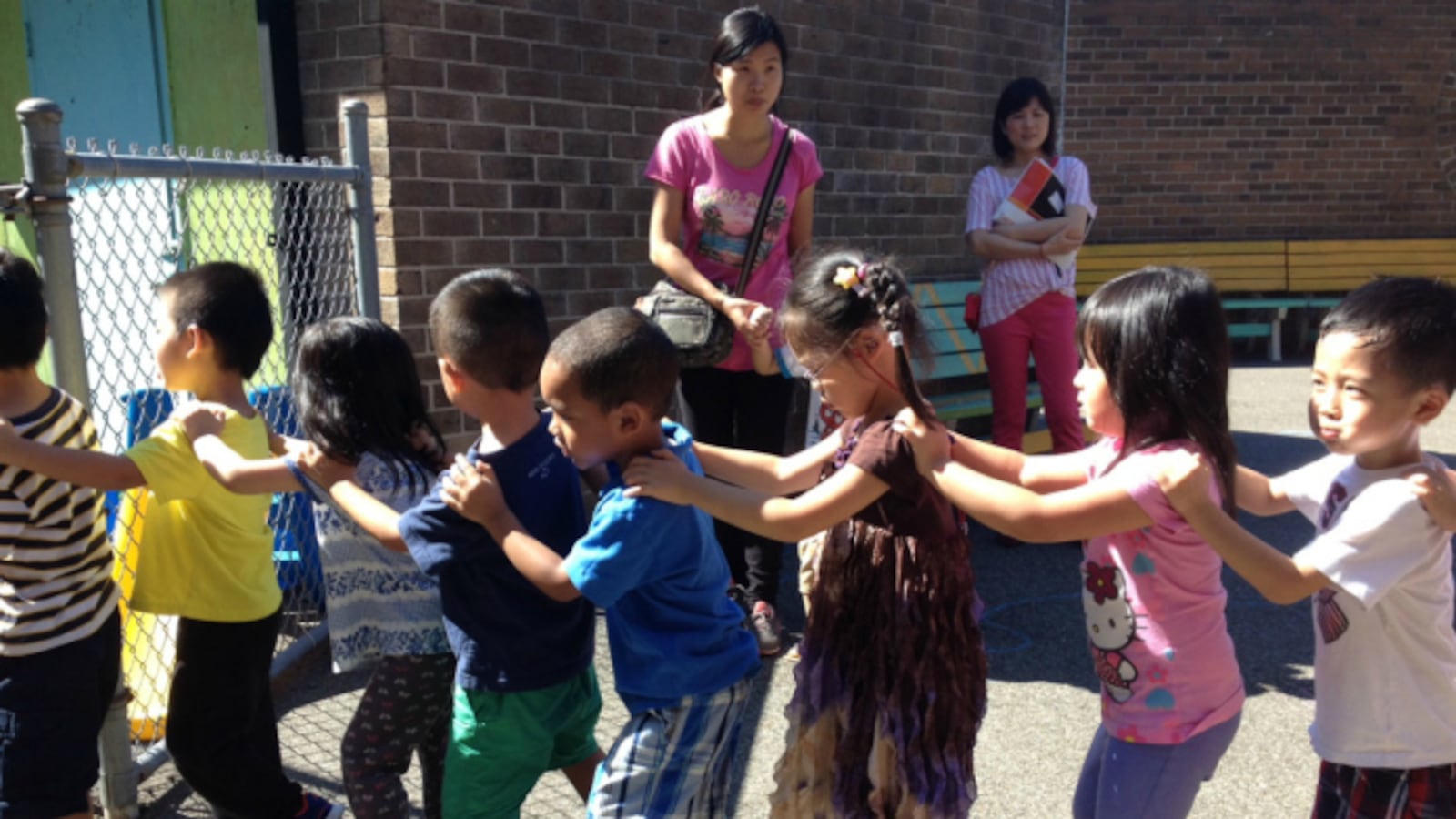As a growing number of parents, educators and policy-makers debate the best way to integrate the city’s schools, one word rarely gets mentioned: pre-K.
A report released Tuesday by the Century Foundation, a think tank focused on inequality, hopes to change the conversation.
New York City’s pre-K classrooms are more segregated on average than its kindergarten classrooms, the report found. One in six pre-K classrooms were highly homogeneous, with 90 percent or more of students coming from a single racial or ethnic background. That’s compared with one in eight kindergarten classrooms.
The report is based on data from the first year of the city’s universal pre-K program, which has earned praise for both its rapid growth and attention to quality. Launched under Mayor Bill de Blasio, the city has more than tripled the number of 4-year-olds attending free preschool since 2014.
Halley Potter, a fellow at the foundation who authored the report, said the city’s program creates an opportunity to bring young children from different backgrounds together in the classroom.
“But unless that opportunity is really cultivated, and unless we have data to support what diversity looks like, then it can be missed,” she said.
Ensuring diversity in pre-K classrooms could create a foundation for integration in later grades — but doing so will require better data collection and specific policy changes, Potter said.
Research shows that children develop an awareness of social and racial differences as early as kindergarten, and preschool students in integrated classrooms are less likely to show bias toward minorities. They also learn better: Students from all socioeconomic groups show learning gains in mixed classrooms.
“We think about it and talk about it all the time,” said Ken Jockers, executive director of Hudson Guild, a community-based preschool provider in Chelsea. “We want kids to have the most substantive experience possible, and the most substantive experience possible, from our perspective, includes broad diversity.”
But there are inherent difficulties in integrating preschools in New York City.
In order to ramp up universal pre-K quickly, the Department of Education relied on both city schools and community-based organizations. The majority of pre-K seats — 60 percent in 2014 — are provided in community-based “early education centers.”
The city announced in May that public schools could propose plans to consider student diversity in their enrollment, as early as pre-K, under the Diversity in Admissions program. But early education centers cannot participate. At the same time, the community-based centers are more likely to be racially and ethnically segregated, Potter found.
Even among early education centers, there are disparities. Black and Hispanic children are concentrated in certain programs that receive funding specifically for low-income students, according to the study.
There are other reasons the centers tend to be less diverse. They often cater to specific religious and ethnic groups, or have strong ties to the immediate community. And parents who can afford to enroll a 3-year-old in paid preschool get preference for a free universal pre-K slot at the same center the following year.
“That means when those centers are enrolling for universal pre-K, they’re getting mostly affluent families for those seats,” Potter said. Rather than eliminate that preference, Potter said the city should add additional seats for four-year-olds. “It’s a challenging problem because continuity is important for kids.”
The extent of socioeconomic diversity in pre-K classrooms is hard to know. Since all Pre-K for All students have the option of free lunch, families who enroll do not fill out eligibility forms for those meals — a common way public schools track student poverty. Pre-K is also excluded from annual school diversity reports, a new mandate passed by the City Council.
“It’s a big gap,” Potter said. “If we want to make sure that universal pre-K provides an opportunity for families of different socioeconomic backgrounds to have kids in a classroom together, we need to find a way to look at whether that’s happening.”
But the community-based model also provides unique opportunities, Potter said. Unlike district schools, early education centers aren’t tied to specific geographical boundaries. And parents may be willing to travel for quality, or so their child can attend a specific program, such a dual-language class, offered in a center. The city should work to help early education centers market those programs, Potter said.
She also called on the city to allow pre-K centers to pilot diversity programs, add more pre-K classrooms in public schools and ensure that preschool students are considered in rezoning and school integration decisions.
“We want to make sure that, in particular, some of our most vulnerable students have a chance to attend high-quality classrooms,” Potter said. “One of the best ways to do that is to make sure there are a lot of diverse classrooms.”
Updated with response from Department of Education Deputy Chancellor of Strategy and Policy Josh Wallack:
“In two years, New York City built a universal Pre-K for All program that serves every four-year-old with free, full-day, high quality programs, and more than 70,400 four year olds have registered for the 2016-17 school year. We’re serving families in every neighborhood, and with a centralized enrollment system and targeted outreach workers, we’ve made it easier for families to enroll and for programs to recruit students. Diversity in classrooms remains an important priority for the Department of Education, because we believe children in diverse classrooms learn from each other and learn better, and we are constantly looking for ways to improve on that through Pre-K for All and across the school system.”


